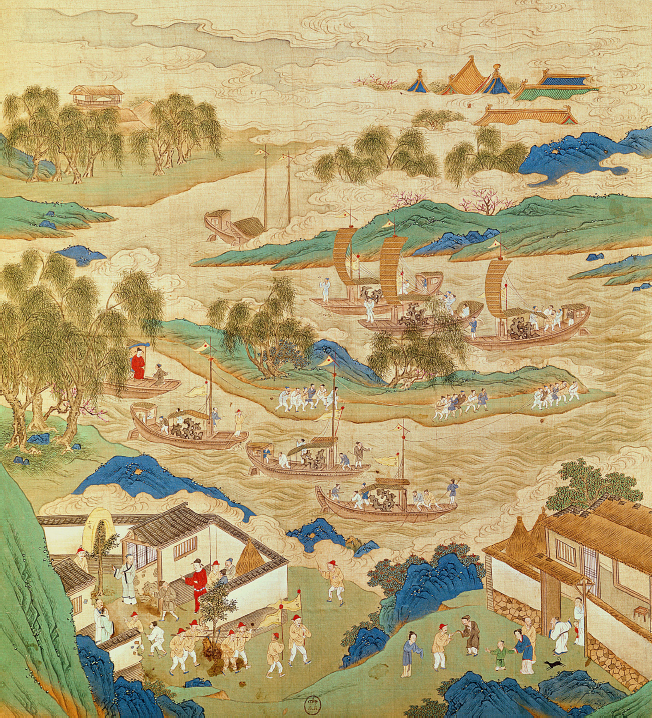Document 13.4: Emperor Hui Tsung Transporting Stones and Trees, 1600s
This final image presents a very different view of the movement of people and goods than those presented in Document 13.2 and Document 13.3. Here a river scene provides a backdrop for the imperial transport of “pierced stones and strange shaped trees.” Song elites prided themselves on their collections of rare and unusual objects and artifacts, and, fittingly, the imperial collection was the greatest of them all. The imperial court served as an important focal point for the flow of art, antiques, and other precious items along China’s roads and rivers, with such objects offered to the emperor by subjects as signs of fealty and to subjects by the emperor as signs of imperial favor. As you examine the scene, think about the economic factors that made elite collecting possible. How might collectors have acquired objects and shared information about their collections with fellow enthusiasts?

Questions to Consider
- What kinds of objects did elite collectors find most desirable? What does this tell you about their tastes and values?
- What role did larger trade patterns play in facilitating collecting?